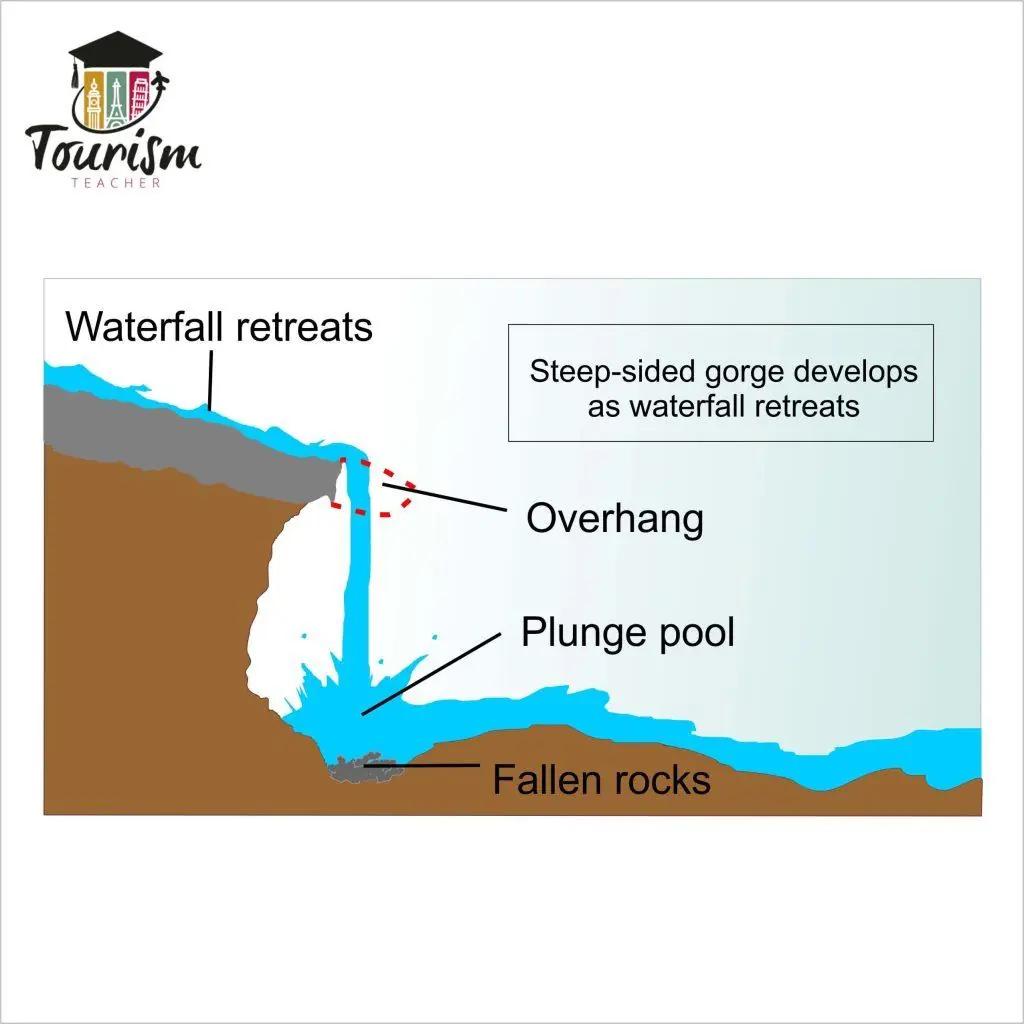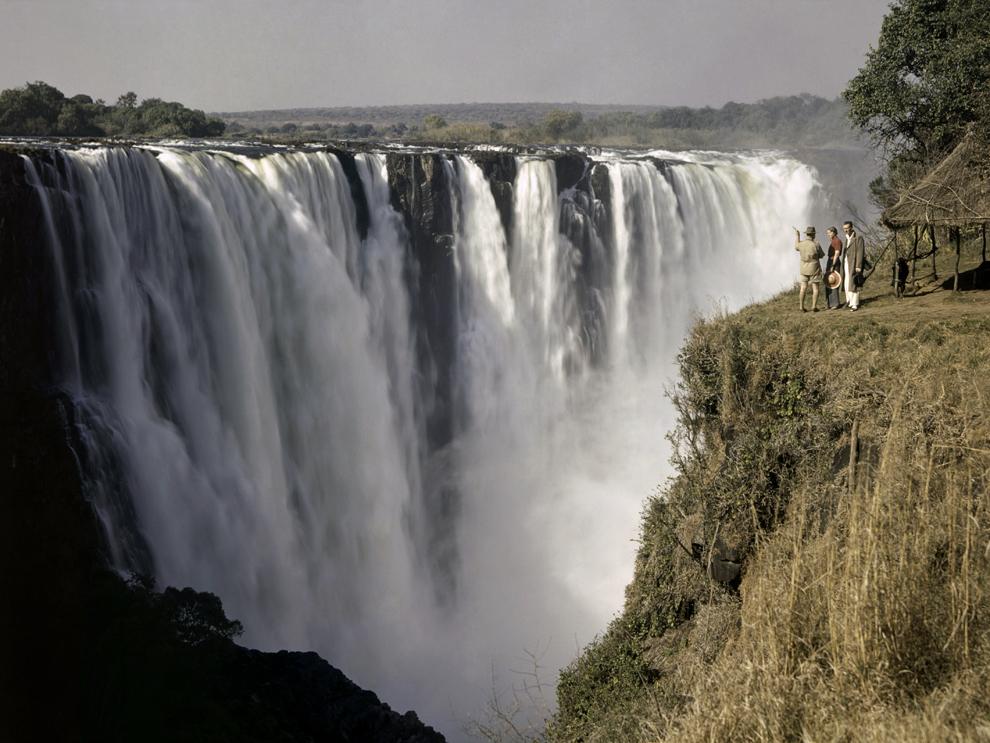In a world where the artist’s brush often falls short of true wonder, nature takes center stage, showcasing some of its most breathtaking creations: waterfalls. These spectacular torrents of water, cascading gracefully from heights unknown, are not just remarkable in their beauty but are also the result of intricate geological processes and the relentless forces of nature. From the thunderous roar of Niagara to the delicate whisper of smaller streams tumbling over moss-covered rocks, waterfalls captivate our senses and remind us of the Earth’s dynamic power. This article delves into the fascinating formation of these natural wonders, exploring how they are shaped by time, topography, and the elements, inviting us to appreciate the artistry that nature so effortlessly presents. Each waterfall tells a unique story, one of erosion, weather, and the relentless pursuit of the river’s path—stories that carve out not only the landscape but also a lasting impression in the hearts of all who behold them. Join us as we traverse the terrain of these liquid masterpieces and uncover the secrets behind their stunning splendor.
Table of Contents
- Understanding the Geological Forces Behind Waterfall Formation
- Exploring the Unique Ecosystems That Flourish Around Waterfalls
- Capturing the Beauty: Photography Tips for Stunning Waterfall Shots
- Preserving Natures Wonders: Responsible Tourism Around Waterfalls
- Wrapping Up
Understanding the Geological Forces Behind Waterfall Formation

Waterfalls are not merely picturesque attractions; they are the result of complex geological processes over vast periods of time. The formation of a waterfall typically begins with the presence of a river that flows over varying types of rock strata. As the water cascades downward, it erodes the softer rock at a faster rate than the harder rock, creating a step-like feature. This process is influenced by various geological forces, including:
- Water Erosion: Continuous flow wears away the rock bed.
- Rock Hardness: Different layers react differently to erosion.
- Tectonic Activity: Uplifted land may create sudden drops.
- Glacial Movements: Glaciers can carve pathways that lead to waterfalls.
As water continues to carve through the rock, it can lead to the development of features like plunge pools or rock overhangs, resulting in an ever-evolving landscape. Over time, as a waterfall continues to erode the rock beneath, it often retreats upstream, creating vibrant gorges. The interaction of the geological forces at play is critical not only for the waterfall’s formation but also for the surrounding ecosystems, which thrive in the unique habitats that these stunning formations create. Below is a simple table showing some notable waterfalls and their geological features:
| Waterfall | Location | Geological Features |
|---|---|---|
| Niagara Falls | USA/Canada | Plunge and plunge pool |
| Angel Falls | Venezuela | Vertical drop, sandstone |
| Iguazu Falls | Argentina/Brazil | Multiple drops, basalt columns |
Exploring the Unique Ecosystems That Flourish Around Waterfalls

The dramatic drop of water from a waterfall creates a unique habitat that supports a rich variety of life. These ecosystems, often characterized by their lush vegetation, vibrant wildlife, and distinct microclimates, thrive in the spray and mist generated by cascading waters. The constant moisture fosters the growth of mosses, ferns, and other epiphytic plants, which find a foothold on the rocks and trees nearby. Animal species such as salamanders, frogs, and aquatic insects make waterfalls their home, benefiting from the nutrient-rich waters that often offer a diversity of food sources. The sound of rushing water not only provides a habitat but also creates a backdrop that enhances the biodiversity dramatically present in these tranquil yet dynamic environments.
Waterfalls act as natural filters, helping to maintain the health of surrounding aquatic ecosystems by preventing excessive sedimentation and allowing clear water to flow downstream. In turn, this clarity promotes aquatic life—indigenous fish species, such as trout and salmon, flourish in the cold, oxygen-rich waters at the base of these natural wonders. Additionally, the surrounding terrestrial environments showcase a mix of flora and fauna that are specially adapted to the humid, windswept conditions. Consider some of the key features that define these remarkable ecosystems:
- Constant humidity – Maintains a moist environment conducive to diverse plant growth.
- Nutrient cycling – Supports a variety of organisms that contribute to ecosystem health.
- Microclimates – Create temperature variations that can support both unique flora and fauna.
Capturing the Beauty: Photography Tips for Stunning Waterfall Shots
- Time of Day: The golden hour—shortly after sunrise and before sunset—offers soft lighting that enhances the beauty of waterfalls.
- Use a Tripod: A steady tripod is essential for longer exposure times, allowing you to create that dreamy, silky water effect.
- Explore Different Angles: Don’t be afraid to experiment with various perspectives, such as getting low to the ground or finding a high vantage point.
- Include Foreground Interest: Incorporating rocks, plants, or other elements in the foreground adds depth and context to your waterfall images.
| Setting | Recommended Values |
|---|---|
| Aperture | f/8 to f/16 |
| ISO | 100 to 200 |
| Shutter Speed | 1/4 to 1 second |
Preserving Natures Wonders: Responsible Tourism Around Waterfalls
To ensure these majestic wonders of nature remain intact for future generations, embracing responsible tourism is essential. Visitors to waterfalls can play a crucial role in their preservation by adhering to a set of simple yet effective guidelines, fostering a greater appreciation for these natural masterpieces. Some key practices include:
- Stay on Designated Trails: This minimizes damage to native vegetation and helps prevent soil erosion.
- Pack Out What You Pack In: Always bring your trash back with you to maintain the pristine environment.
- Respect Wildlife: Observing animals from a distance ensures their habitat remains undisturbed.
- Limit Noise Pollution: Keep noise levels down to respect other visitors and local wildlife.
Incorporating these practices into your visit goes a long way in protecting these natural attractions. Additionally, supporting local conservation efforts can enhance the stewardship of these ecosystems. When exploring waterfalls, consider getting involved in community programs or organizations dedicated to safeguarding these areas. For example, local initiatives may focus on:
| Initiative | Description |
|---|---|
| Clean-Up Drives | Regular events that invite community members to help clean up natural spaces. |
| Guided Ecological Tours | Educative tours led by experts that promote awareness and respect for the ecosystem. |
| Native Plant Restoration | Programs aimed at restoring native plants to their natural habitats. |
Wrapping Up
As we conclude our exploration of “,” we are reminded of the intricate dance between water, land, and time that creates these breathtaking spectacles. Each waterfall, from the roaring cascades of Niagara to the delicate streams of hidden glades, tells a story etched in the rock and shaped by the elements. These natural wonders not only captivate our senses but also inspire a deeper appreciation for the planet’s dynamic processes.
As we gaze upon these rushing waters, let us recognize the delicate balance of ecosystems they sustain and the vital role they play in our environment. Whether you find solace in their rhythmic flow, adventure in their challenging terrains, or tranquility in their misty embrace, waterfalls offer us a unique glimpse into the artistry of nature. So, the next time you stand before one of these magnificent creations, take a moment to reflect on the timeless forces that brought them to life, and let the beauty of the natural world resonate within you.


